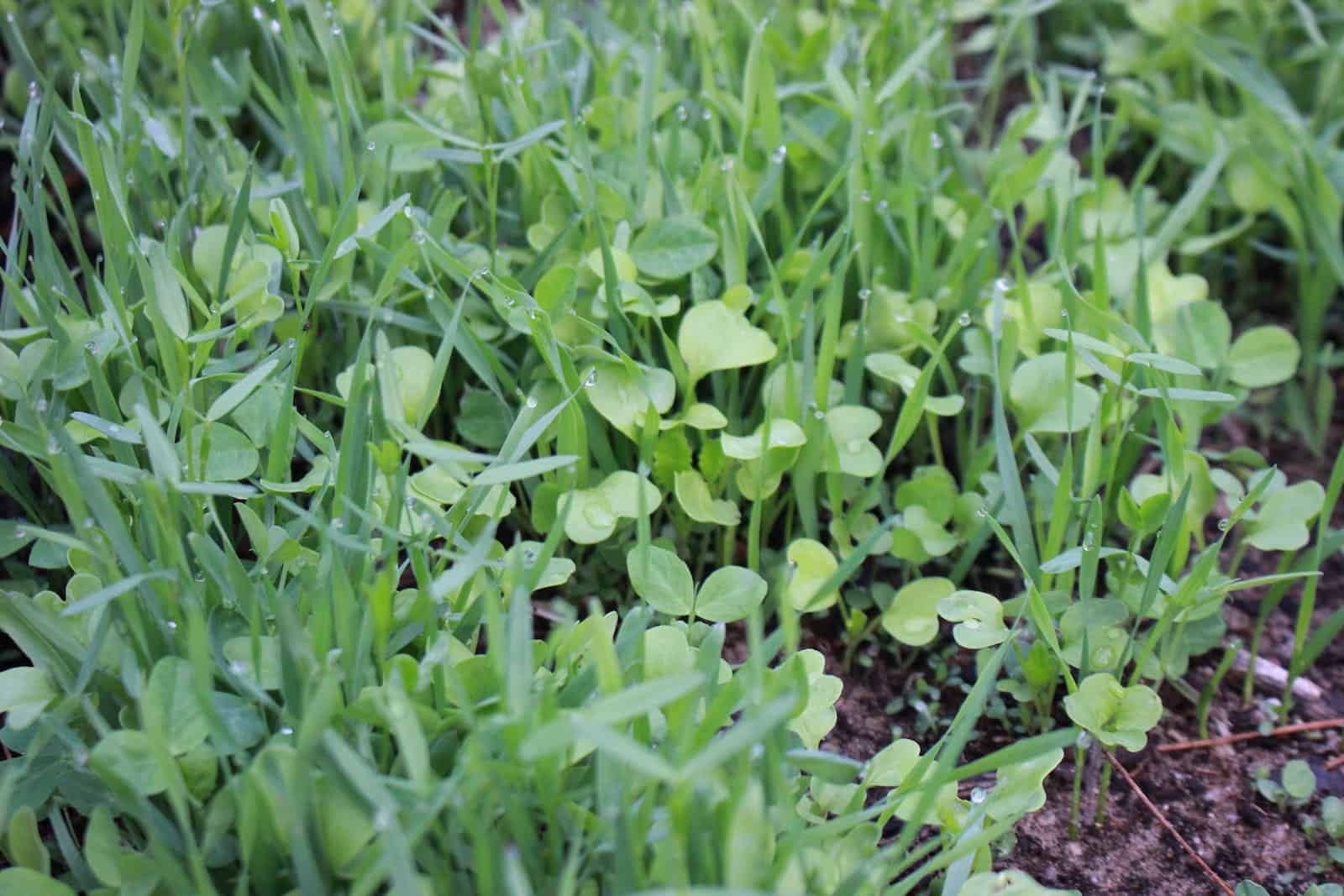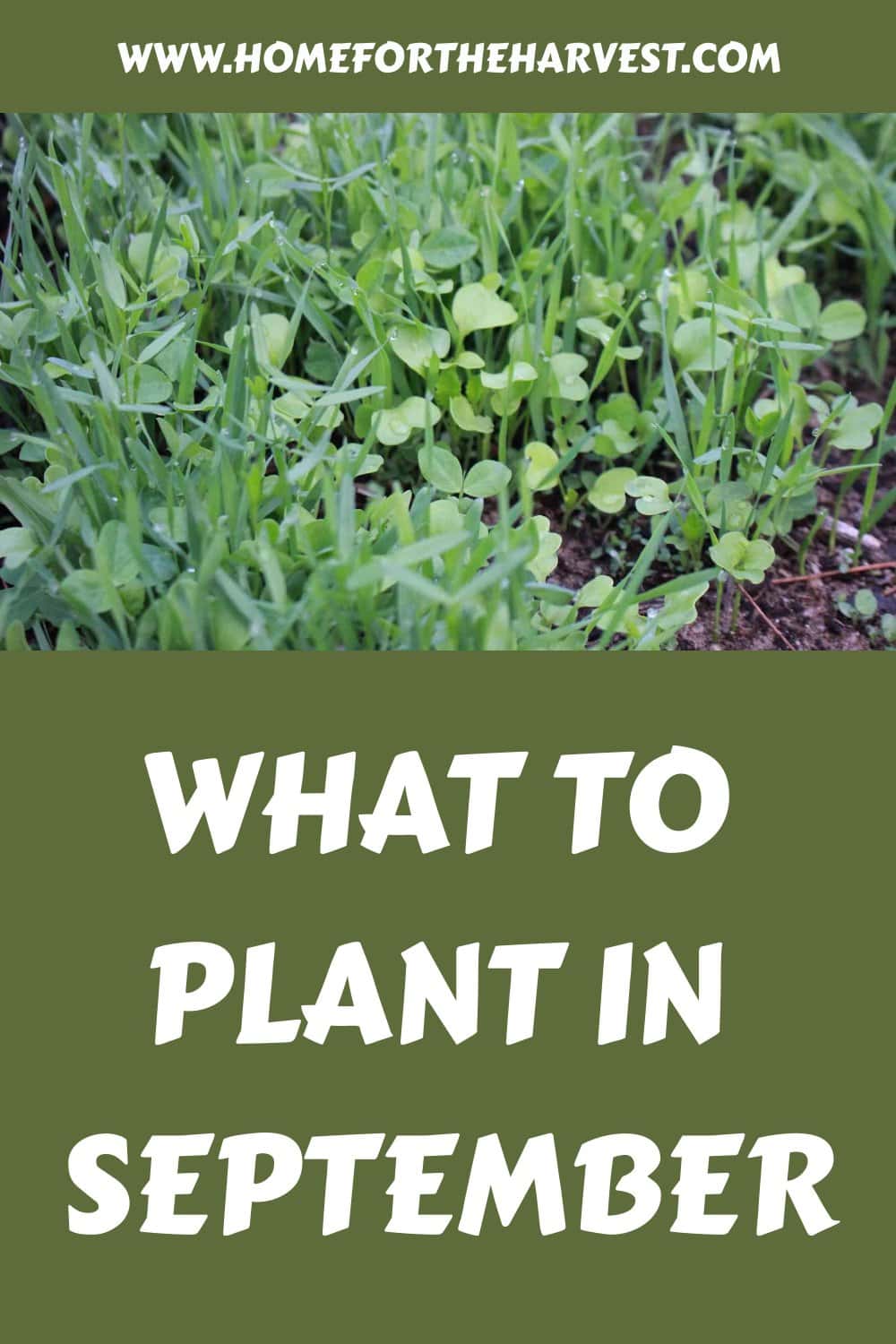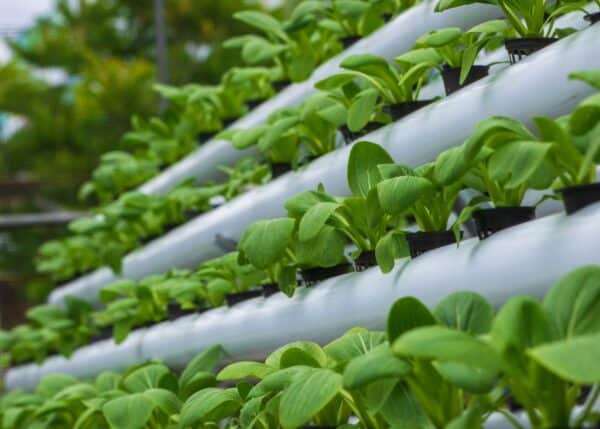Wondering what to plant in September? As autumn approaches, gardening enthusiasts can not only look forward to a fruitful harvest but also to a new season of planting potential in the garden. From cover crops to fall veggies and beautiful bulbs – there are so many options! Let’s dive into this exciting season together.
What to plant in September
As the summer heat gradually diminishes and the crops are harvested one by one, there is the question of how to deal with the bare soil left in the garden. If you leave it bare, weeds tend to move in, so many gardeners choose to plant again in early fall, whether for a cool-season harvest or to enrich the soil.
While you can realistically plant just about any hardy plant in September, there are a few categories that do particularly well or fill a certain need when planted in early fall. In particular, September is a great time to plant cool-season cover crops, leafy greens, fall vegetables, herbaceous perennials, flower bulbs, and woody plants like trees and shrubs.
Disclosure: This article is generously sponsored by True Leaf Market, a certified organic, non-GMO seed and horticultural company based in Salt Lake City, Utah. The True Leaf Market staff specializes in supplying a large selection of conventional, heirloom, and organic seeds to home gardeners everywhere.
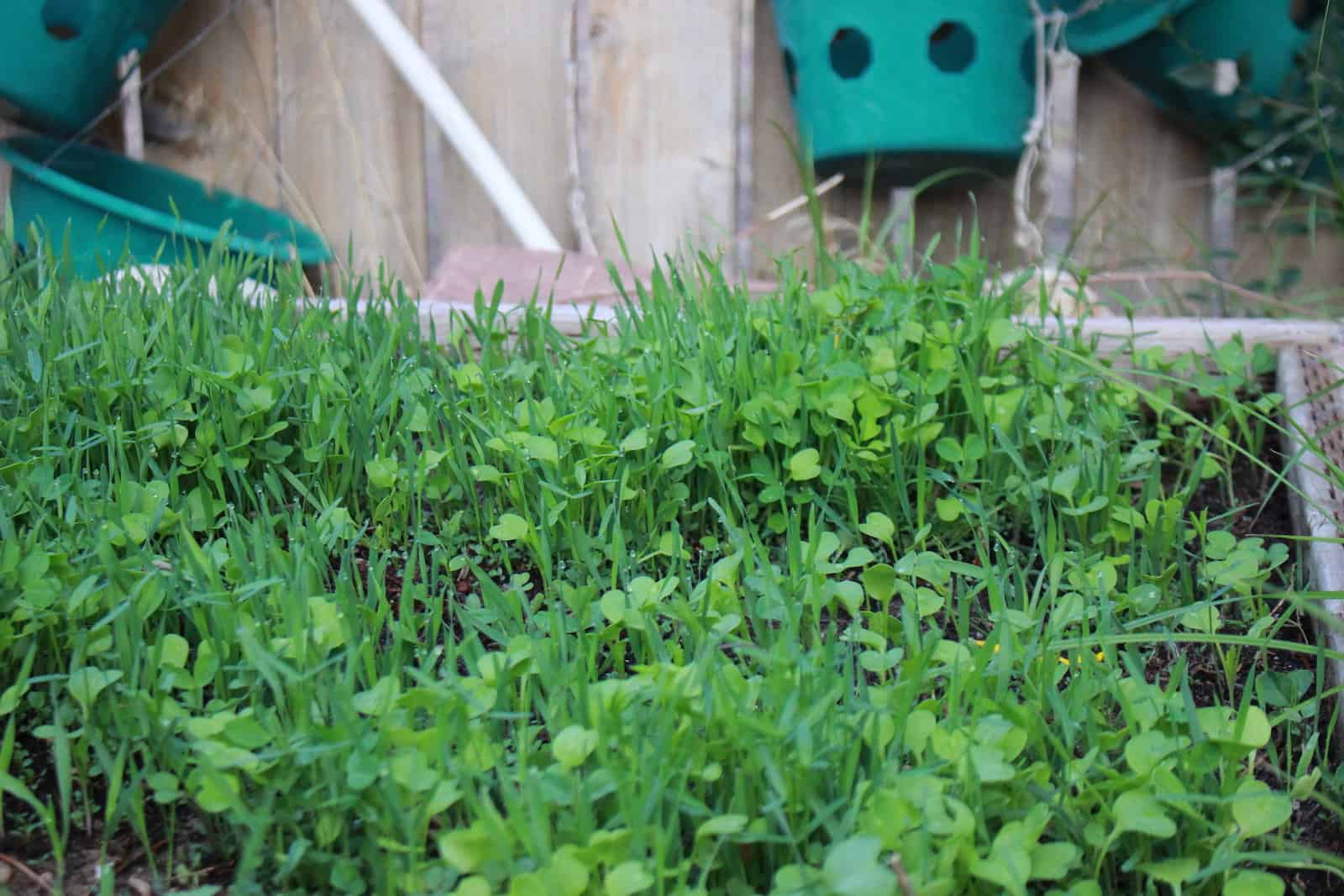
1. Cool-season cover crops
Gardeners worldwide grow cover crops because they offer numerous benefits that enhance future plant growth. These plants can improve soil quality by adding organic matter to the earth while infusing key nutrients necessary for supportive soils. Some also have deep roots that work to break up compacted soil and increase water infiltration rates of a garden area. These processes can significantly increase crop yields during subsequent seasons.

Here are some popular cool-season cover crop seeds from True Leaf Market that can be planted in September in many climates:
- Winter rye
- Clover (including crimson, red, and white clover)
- Field peas
- Hairy vetch
- Winter wheat
- Fava beans
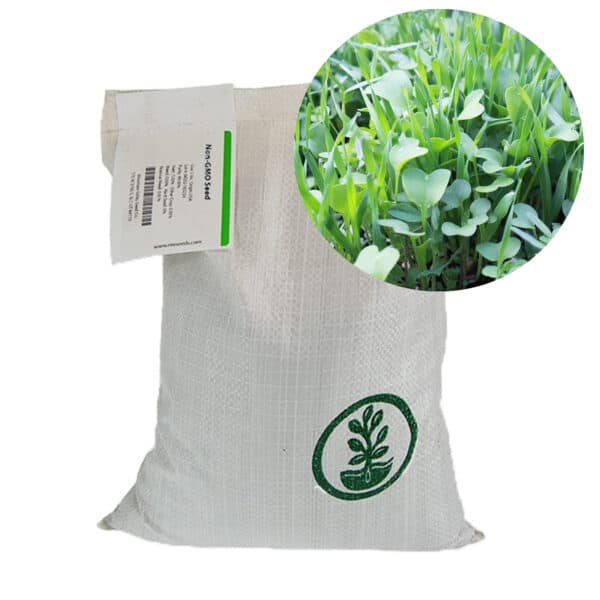
Many cover crops work best when planted as a mix of different plant species for a diverse crop. This strategy can provide multiple benefits with a single sowing. One of the best mixes for home growers is True Leaf’s Garden Mix, which is a blend of nine of the most popular cover crops, including field peas, winter wheat, and clover.

Most cover crops are cut, mowed, or tilled into the soil before they go to seed. This is done to prevent the crops from returning in the spring so that your soil is ready for your early spring garden planting.
2. Leafy greens
Leafy greens almost always do better in cooler shoulder seasons than in summer heat. Take advantage of the warm soil in September for speedy germination, and you’ll be harvesting greens throughout the late fall. Look for cold-hardy varieties of the following leafy greens:
- Lettuce
- Spinach
- Kale
- Swiss chard
Consider using row covers, cold frames, or hoop houses. These can provide protection from early frosts and allow plants to continue growing longer into the fall or winter.
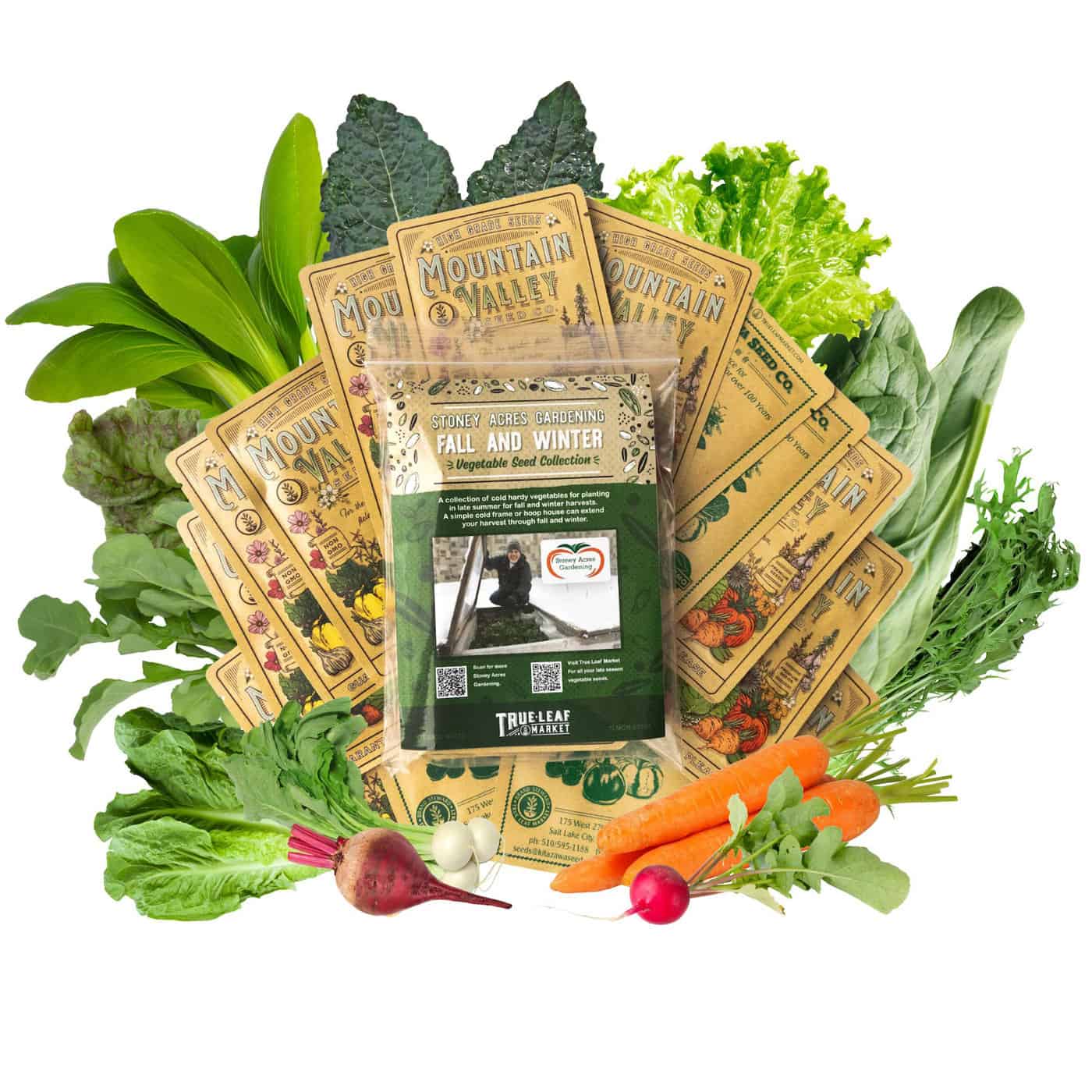
3. Fall vegetables
As the season shifts from summer to fall, a new set of vegetables come into their prime. Cool-season crops tend to do well in the cooler temperatures of the shoulder seasons. Here are some vegetables you can plant in September:
- Radish
- Carrot
- Beet
- Turnip
- Cabbage
- Shallots
- Peas
In general, opt for fast-maturing or cold-hardy varieties suitable for a shorter growing season. Alternatively, choose cultivars bred to overwinter for a harvest in the new year.
A quick way to go about getting fall-optimized varieties is to look for a fall vegetable seed collection. True Leaf’s collection of 14 cold-hardy vegetables for fall includes select cultivars of carrot, beet, kale, lettuce, radish, spinach, turnip, and more cold-hardy veggies for your garden.
As discussed for growing leafy greens, you can use row covers, cold frames, or hoop houses for some protection from early frosts to extend your growing season. Watch out for early frost predictions. If frost is predicted, either harvest sensitive crops or cover them for protection.
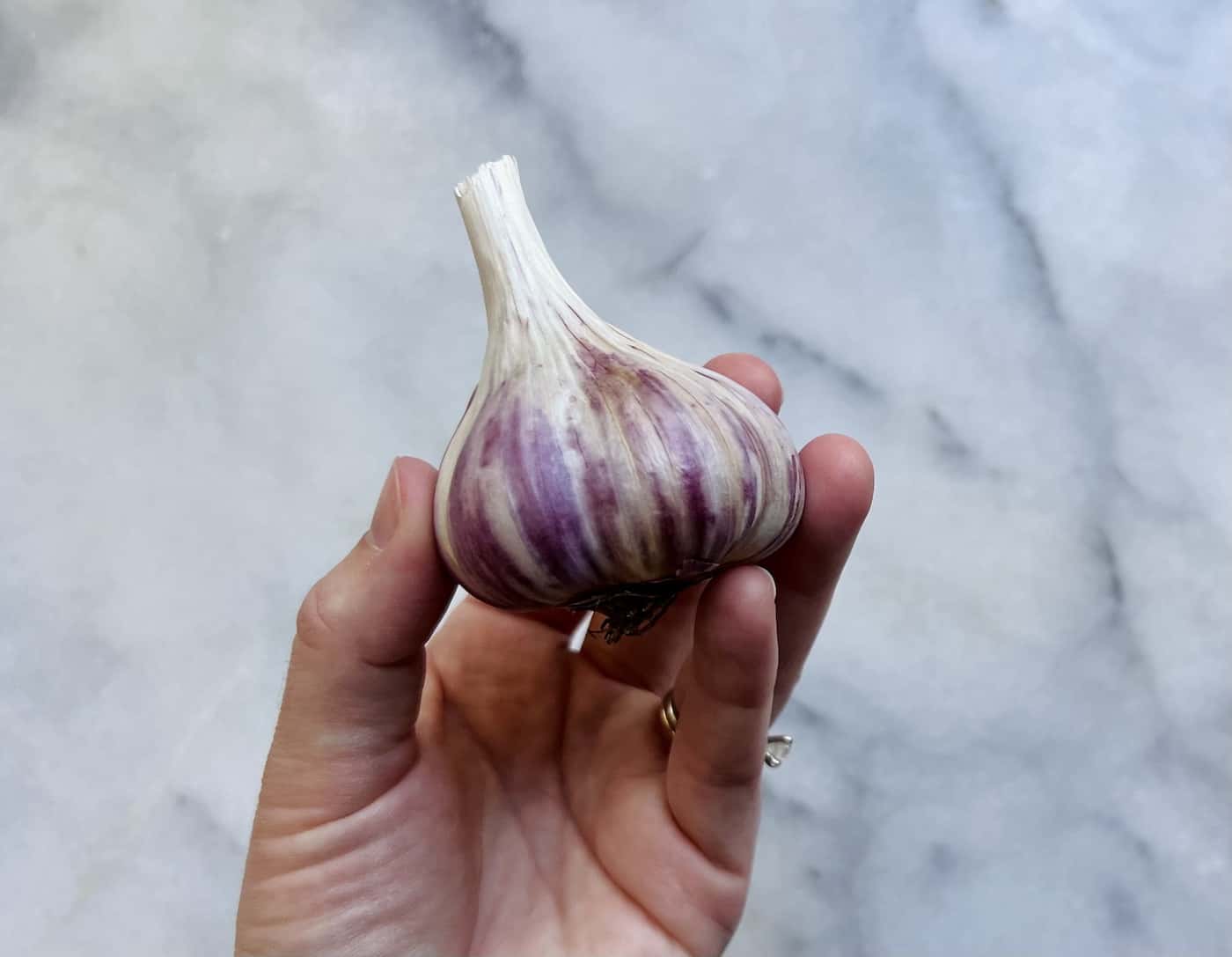
4. Garlic
Garlic is typically planted in September in temperate climates where the ground freezes in winter. Garlic requires a long growing season to mature, so getting them in the ground allows them to root in before the ground freezes so the plants have a head start in the spring. This allows them to grow larger by the time they are harvested in the summer.
Garlic is naturally adapted to sprout in the fall, overwinter underground, and then grow rapidly in the spring. By planting in the fall, you’re aligning with the plant’s natural lifecycle and with seasonal precipitation. In many regions, the fall and winter months are more humid and/or rainy than the summer months, so fall-planted garlic may require less irrigation.
There are two main categories of garlic—softneck and hardneck. Hardneck varieties are typically more winter-hardy and are often chosen for fall planting in colder climates. Here are some popular varieties of hardneck garlic to plant this September:
- Music
- German Red
- Purple Glazer
- Spanish Roja
- Siberian
It’s typically best to plant garlic about 4-6 weeks before the ground freezes. Once the garlic is planted and the soil has frozen, a layer of straw or shredded leaves can help insulate the soil, prevent heaving during freeze-thaw cycles, and suppress weed growth.

5. Herbaceous perennials
Planting herbaceous flowering perennials from seed in early fall can be a smart strategy because it mimics the natural life cycle of many plants that drop seeds in the fall. These seeds then undergo a period of cold stratification (cold exposure) over the winter, which helps to break seed dormancy and promote germination come spring.
Here are some herbaceous flowering perennials that you can consider sowing in early fall:
- Coneflower
- Rudbeckia
- Milkweed
- Asters
- Lupine
- Poppies
- Penstemon
- Yarrow
- Columbine
When sowing seeds in the fall, always clear the planting area of weeds and amend the soil if needed. Follow seed packet instructions when planting. Keep the soil moist but not waterlogged. And since it’s a long time between sowing in the fall and germination in the spring, use garden markers so you remember where you’ve planted.

6. Quick-growing annual flowers
If you’re looking to plant annual flowers in September, you’ll be limited primarily to those that can mature quickly and tolerate cooler temperatures as the season progresses. Research your average first fall frost date before you choose what to grow. Some areas may not have enough growing season left to plant short-lived flowering plants in September.
Here are some annual flowers that are relatively quick to mature and can provide a burst of color in the fall:
- Pansies
- Calendula
- Ornamental kale
- Dianthus
- Sweet alyssum
- Nasturtium
When planting annuals in September, make sure to keep an eye on overnight temperature and frost forecasts. If an early frost is predicted, you might need to cover your flowers or move potted plants indoors for the night.
If you’re late into September, consider buying young plants (transplants) instead of starting from seed. They’ll give you a head start and are more likely to bloom before heavy frosts.
7. Flower bulbs
The joy of gardening extends beyond the summer months, and late September is a fantastic time to plant bulbs for spring flowering. These gems need cold dormancy in order to burst into life with vibrant colors when warmer weather returns. Giving them an early start by planting in the fall ensures they are well established before winter’s chill sets in.
Your choice of bulbs can be influenced by many factors, including color preferences, fragrance, or even how tall you want your flowers to grow. Tulips, daffodils, and crocuses remain popular choices among gardeners due to their stunning displays each year.
Planting bulbs in late September in a temperate climate can lead to beautiful blooms in the spring. Here’s a list of flower bulbs that are well-suited for fall planting in such climates:
- Tulips
- Daffodils
- Crocus
- Hyacinth
- Snowdrops
- Alliums
- Fritillaria
- Muscari
- Scilla
- Iris reticulata
When planting bulbs in the fall, remember that planting depth is crucial. As a general rule, bulbs should be planted three times their height deep in the soil. Different bulbs tend have differing specific planting recommendations, so always consult the planting instructions that come with your bulbs.
Make sure the soil drains well. Bulbs don’t like to sit in wet soil, as they can rot. Make sure to plant bulbs with the pointed end facing up. If it’s challenging to determine which side is up, plant the bulb on its side; it will find its way up.
Give bulbs enough space to grow. Larger bulbs like tulips and daffodils should be spaced about 4-6 inches apart, while smaller bulbs like crocus can be planted 2-3 inches apart. Again, consult the planting instructions that come with your bulbs.
8. Trees and shrubs
Just as perennial plants add color and texture to your garden, trees, and shrubs can provide structure and year-round interest. The cool weather in September is perfect for planting these beauties.
The first step is choosing a tree or shrub that will thrive in your specific conditions. Factors like climate, type of soil, how much sunlight is available, and the size of space all have an influence when picking a tree or bush. Consider factors such as size (both height and spread), growth rate, foliage type (needles or broadleaf), deciduous vs. evergreen, and flowers (if any) before making a decision.
Evergreens are popular for year-round privacy. Large decidious trees can make great shade trees. Smaller evergreens can add structure to the winter landscape, while flowering shrubs can add interest during the summer months.


